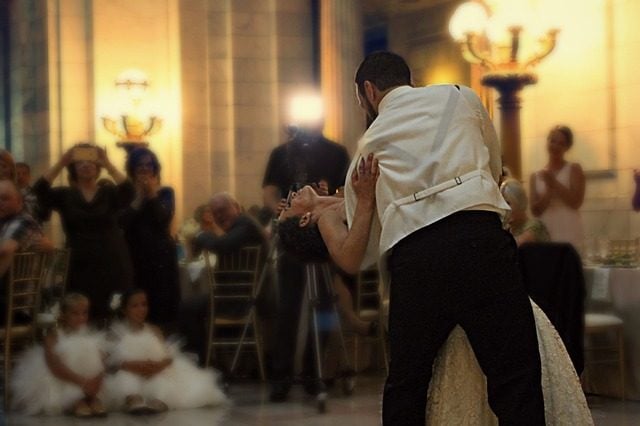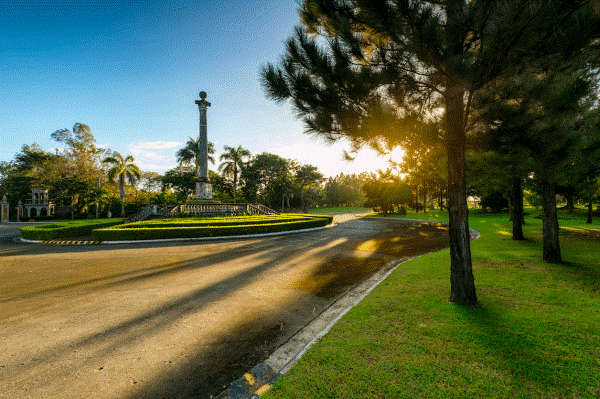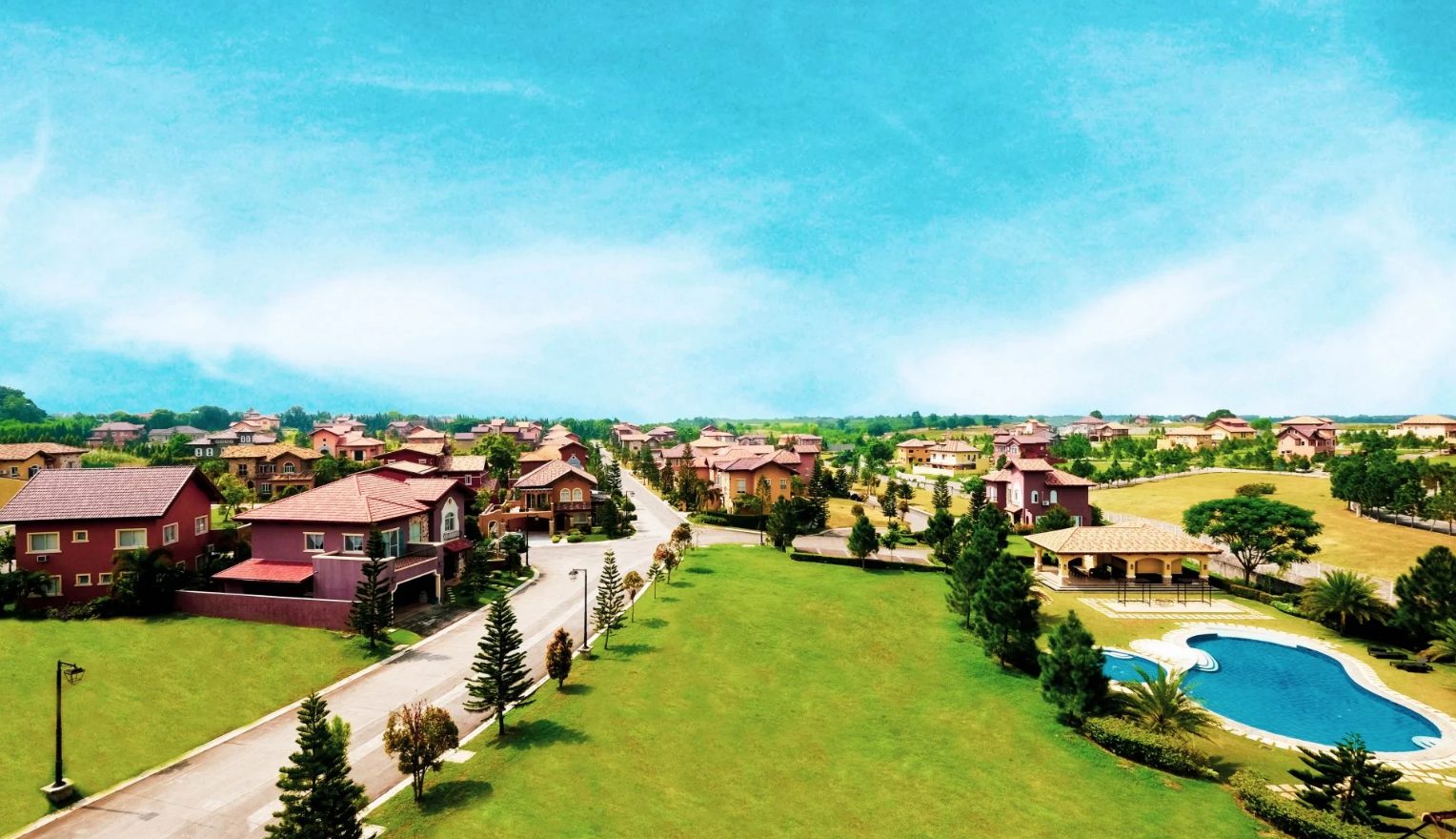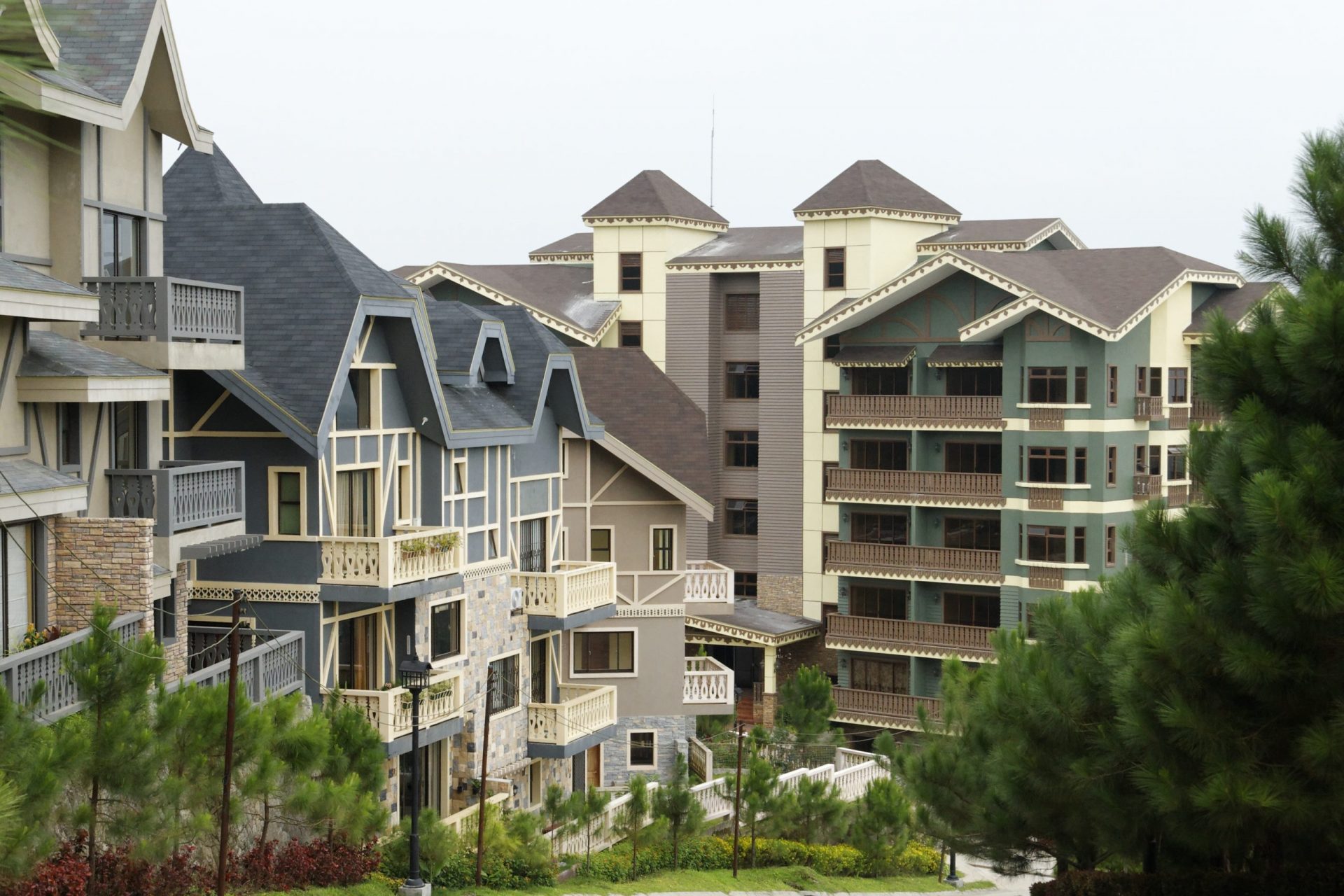BLOGS
Rustic Elegance: Creating Spanish-Inspired Interiors with Natural Materials
“Are you desiring to have a Spanish-inspired home?”
Bienvenidos!
Let’s look at the rich history of Spanish art, architecture, and culture that informs its beautiful and inviting interior design.
We’ll show you how to bring the richness of Spanish interiors into your home, from terracotta tiles to wooden accents and everything in between. Whether you’re drawn to the laid-back elegance of a Mediterranean villa or the fiery passion of a flamenco performance, this guide will provide the tools and ideas you need to create a space that feels like home.
Keep reading to learn about the history and culture of Spain and use that knowledge to make a modern Spanish house design that will stand the test of time while still being full of life with the help of natural materials.
What are Spanish-style homes called?
Spanish-style homes are called “Spanish Colonial” or “Colonial Revival” homes. They are characterized by their distinctive architectural features, such as red tile roofs, white stucco walls, and ornate wrought iron details.
These homes were initially inspired by the architecture of Spain’s colonial period in the Americas, particularly in California, where Spanish missionaries and settlers built many of the first European-style buildings in the region. Over time, the Spanish Colonial style became popular throughout the United States and is now a beloved and iconic architectural style.
What are the Characteristics of Spanish-type houses?
A Spanish Colonial home is usually in tune with its surroundings. The casual homes have thick walls made of stucco, red-tiled roofs, and enclosed courtyards that make the living room bigger.
Built with materials from the area.
In the Southwest, Spanish Colonial houses might be made of adobe. In Florida, they might be made of coquina rock.
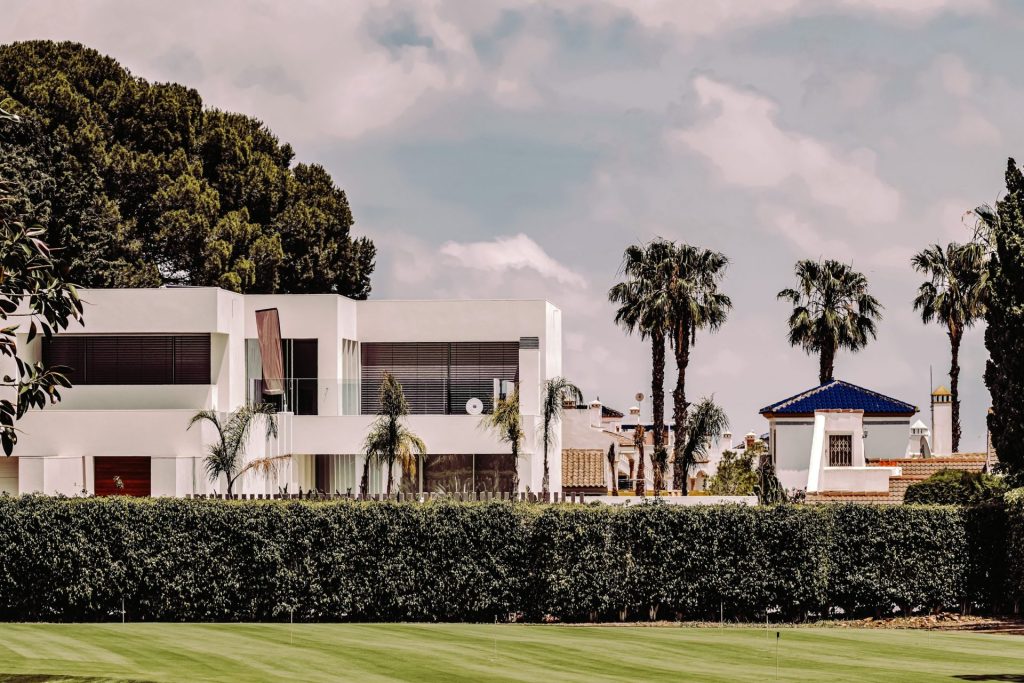
Walls made of thick plaster.
When it’s hot, thick walls are the best thing to have. “Thick walls soak up the heat of the day and slowly send it back into the building when it gets cool at night,” says Stacholy.
Small windows that open up.
Smaller windows originally closed with wrought iron grates instead of glass panes, are placed on the building so that they catch breezes but don’t get full sunlight. When there are wooden doors, they are usually put up on the inside of the house.
One storey.
Our ranch-style house has its roots in the Spanish Colonial.
Not many decorations.
The only decorations on these simple houses were usually arches over the doorways, main windows, and passageways inside. Homes with more details might have complex stone or tile work, chimney tops with details, and square towers.
Support beams made of wood.
In original Spanish Colonials, the roof supports are wood and stick out over the outside walls.
Courtyard inside.
In the past, the courtyard gave families a place to cook outside, away from the heat and steam that came with it. Today, these patios, porches, and gardens are places where family, friends, and extended family can get together casually.
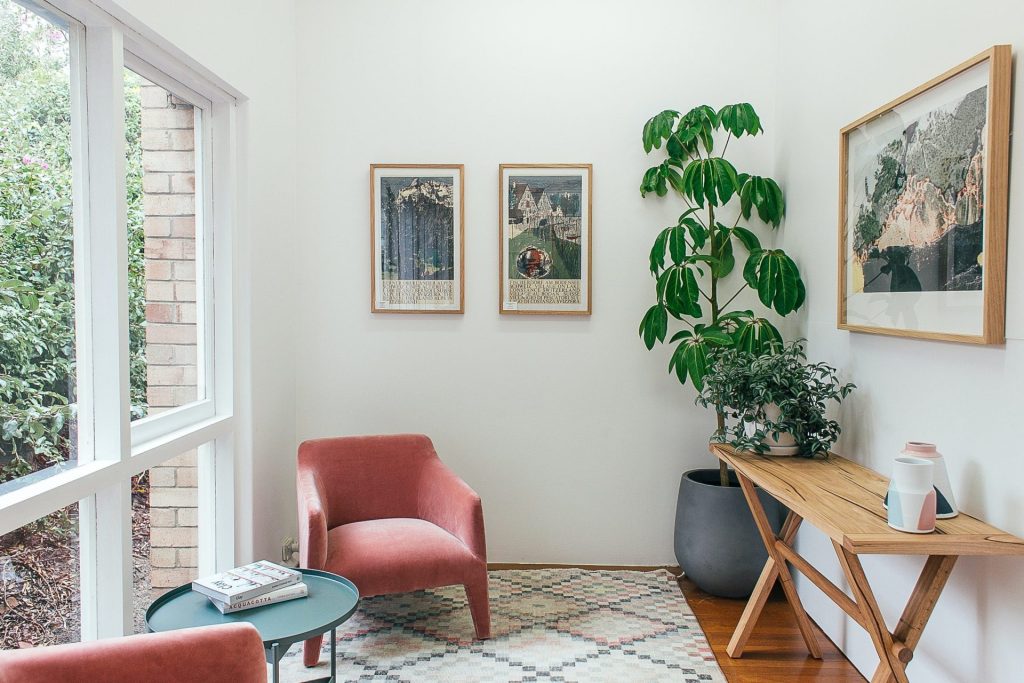
Spanish Interior Ideas 101
What are its characteristics? The cultural wealth of Spain is reflected in the elegance of its interior design. Style hallmarks include wooden beams, mosaic tiled backsplashes, wrought iron banisters, and terracotta-hued terracotta walls.
This popular architectural style is typical of the warmer regions of the American Southwest. However, if you don’t happen to live in a part of the country where Spanish Colonial architecture is prevalent—like Los Angeles, San Diego, Santa Fe, or Miami—you need not worry.
The homes in Spain feel very modern. Modern homes don’t have a lot of molding, but they do have beams you can see. Wooden beams are a big part of this style, whether they are painted or not. At first, they were used to hold up the heavy roof, which was covered in the famous red tiles you see today. Now, they are used as decorations to give a building an original Spanish look.
In traditional Spanish, houses are made from local materials, and the outside is usually made of stucco, which is a product that looks like cement and is put on the outside of a house. These houses are built on more than one floor and have arches, hallways, and entryways with a lot of detail. The railings on stairs are usually made of cast iron, and doors are usually made of wood and have rounded edges. Rarely will you find straight, simple lines in Spanish homes.
What are the typical colors used? Earthy colors like terracotta reds and oranges, along with neutrals, are the main colors for Spanish homes. These colors come from the environment and the use of natural materials. Whitewashing the walls helps keep the home cool. Consider Rusty Gate, Yellow Gold, or Spanish Chestnut to add a bit of color.
Minimalism is key. Minimalism is a key part of Spanish-style interior design that you might not notice immediately. At first look, you might notice the pops of color, the mosaic backsplash in the kitchen and on the stairs, or the beautiful soft archways. All of these things are eye-catching, but most people don’t use a lot of home decor. This minimalist look is created by walls with a gray color scheme and small pops of color from plants or simple artwork. Try putting old-world art on your walls to make them more interesting.
You can add a little Spanish flair by making a mosaic backsplash in your kitchen or putting clay tiles on your floor. The dark orange colors will warm up any room immediately and add more depth.
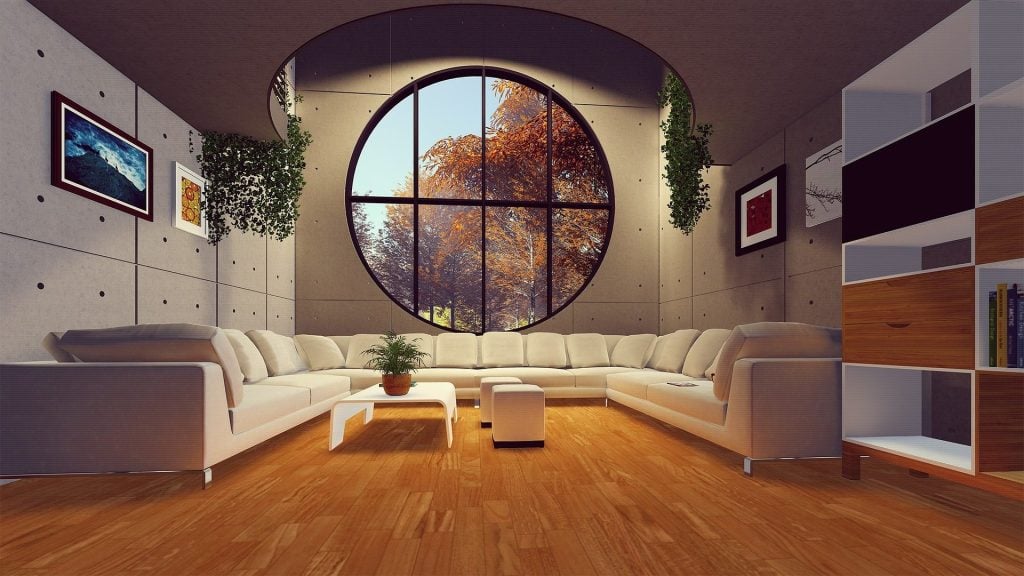
Modern Spanish House Tour – Home Bunch Interior Design Ideas with Natural Materials
-
You can cover your floor with terracotta tiles or use them as a decorative accent.
Warmth and texture can be brought into any space with the use of terracotta tiles, which are a traditional component in homes designed in a Spanish style.
-
To achieve a more natural, earthy, and rustic appearance, install wood paneling or wooden beams on the ceiling.
The place gains personality and allure as a result of these components.
- Add a touch of sophistication to the room by decorating it with wrought iron accents such as lamp fixtures, curtain rods, and railings.
In homes designed in the Spanish colonial style, wrought iron is a typical building element because of the rustic allure it imparts.
- Use natural stone for your countertops, fireplace surrounds, or accent walls by utilizing limestone or granite, for example.
Any space can feel more elegant and enduring when natural stone is incorporated into its design.
-
To produce an environment that is animated and full of life, decorate with textiles in warm colors such as reds, oranges, and yellows.
You may incorporate these colors into your decor by using things like toss pillows, area rugs, and drapes.
-
Use pieces of furniture made from natural wood
Coffee tables or dining tables with a distressed wood finish give the room a sense of rustic appeal and a sense of coziness.
What type is a Spanish revival Home in Sonoma?
A Spanish Revival home in Sonoma is a type of architectural style that is characterized by its traditional Spanish Colonial design elements with a mix of Mediterranean features, which originated in the early 20th century. The style emphasizes the use of natural materials such as clay tiles, stucco walls, wrought iron, and wood to create a warm, rustic, and inviting atmosphere.
A typical Spanish Revival home in Sonoma may feature a white stucco exterior with red barrel tile roofs, wrought iron balconies and railings, arched doorways, and carved wooden doors. The interior may feature high ceilings, exposed wooden beams, and decorative tilework on floors, walls, and fireplaces. Other common features include decorative wrought iron light fixtures and sconces, ornate plasterwork, and colorful tiles.
Sonoma, a town located in Northern California, is known for its beautiful landscape, vineyards, and wineries. Many homes in Sonoma, including Spanish Revival homes, incorporate outdoor living spaces such as courtyards, patios, and terraces to take advantage of the region’s temperate climate and scenic views. These homes offer a unique blend of historic charm and modern comfort, making them a popular choice for those looking for a distinctive and elegant home in Sonoma.
Is there a Spanish Inspired property in the Philippines?
Sí! Brittny’s Luxury Estate in Santa Rosa is an amazing illustration of the compatibility of new and classic Spanish in a property. This 34-hectare land was named Pontevedra after an appealing little riverbank city in Spain that mixes history, culture, and elegance. The estate features residential and commercial properties that exemplify a modern design, timeless quality, and artistic legacy.
Pontevedra is like a work of beauty in the middle of Santa Rosa City; its winding alleys, plazas, and attractive squares are always bustling with activity, thanks to the many cafes and restaurants that call them home.
Suggested Read: Traditional Spanish Decor: Tips For Achieving A Classic Look
Suggested Read: Spanish-Style Homes: Smart Investment In Today’s Market
Suggested Read: Exquisite Craftsmanship Of Spanish Architecture
Suggested Read: Colors Of Rustic Spanish Style Homes
Suggested Read: Bringing The Colors of Spain



